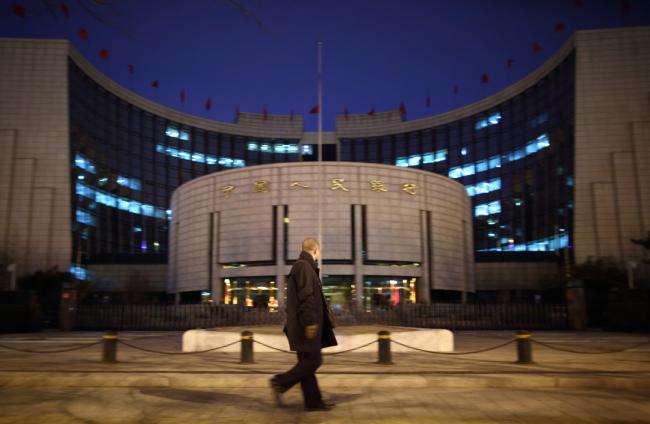(Bloomberg) -- China’s central bank will cut the amount of cash some lenders must hold as reserves, unlocking about 700 billion yuan ($108 billion) of liquidity, as it seeks to control leverage and support smaller companies.
The required reserve ratio for some banks will drop by 0.5 percentage point, effective July 5, the People’s Bank of China said on its website. That’s the day before the U.S. and China are scheduled to impose tariffs on each other, and the cut should help companies affected by deteriorating relations between the world’s two largest economies.
Such a reduction had been widely expected, especially after China’s cabinet said on Wednesday that it would use monetary policy tools, including cutting reserve ratios for some banks, to boost credit supply to smaller companies. Sunday’s cut probably won’t be the last. Analysts expect the bank to further ease policy going forward to help cope with a slowing economy and offset the effects of a crackdown on shadow banking.
"While the PBOC reiterated its neutral stance, we think that the move is one step further toward more accommodative monetary policy, which is only fitting given softening growth and mounting trade tensions," Wei Yao, China economist at Societe Generale (PA:SOGN) SA in Paris, wrote in a note. She expects further cuts in the reserve rate ratios, lower rates on liquidity instruments and a lower interest rate corridor in the second half of the year.
Supporting SMEs
The aim is to support small and micro enterprises, and to further promote the debt-to-equity swap program, according to the central bank. The cut will apply to major state-run commercial banks, joint-stock commercial lenders, postal banks, city commercial lenders, rural banks and foreign banks.
The PBOC designed the cut to do two different things, according to the statement. The 500 billion yuan unlocked for the nation’s five biggest state-run banks and 12 joint-stock commercial lenders will be channeled to debt-to-equity swaps, which can reduce companies’ debt burdens and help cleaning up banks’ balance sheets. The 200 billion yuan freed for smaller lenders such as the postal bank and city commercial lenders will be used to support funding for smaller businesses.
Targeted, precise change
The move will "help push forward the steady progress of structural deleveraging, and strengthen support to the weak links of small-and-micro businesses. It is a targeted and precise fine-tuning," the central bank said in a separate statement. "The PBOC will keep implementing prudent and neutral monetary policy, and create a favorable monetary and financial environment for high-quality development and supply-side reform."
"The RRR cut this time doesn’t change the PBOC’s prudent policy stance. The decision fits the current economic and liquidity situations," said Wen Bin, a researcher at China Minsheng Banking Corp. in Beijing. "It is also an innovative move and addresses structural problems, as the central bank ordered the lenders to use the money unleashed to push forward debt-to-equity swaps and support small-and-micro-sized businesses. This can help relieve financial burdens for some companies while reducing leverage."
The funds unlocked from the reserve ratio cut shouldn’t be used to support so-called zombie companies, the PBOC said.
Risk containment
The central bank’s support of debt-to-equity "may reflect its intent to contain credit risk and prevent a significant impact on domestic business confidence," Morgan Stanley (NYSE:MS) economists led by China Chief Economist Robin Xing wrote in a note. The next steps could include open market cash injections and further RRR cuts, Xing wrote.
The central bank is adjusting monetary policy at a time when China’s economy is showing signs of slowing amid an ongoing campaign to clean up the financial sector and worsening trade tensions with the U.S. The change will also help ease a funding squeeze for lenders, which have to repay money borrowed from the central bank’s medium-term lending facility, and put aside cash for both the July tax season and upcoming quarterly regulatory checks.
One-month interbank borrowing costs, or Shibor, climbed to the highest level since early April last week, as liquidity tightens before the regulatory and tax season.
Beats expectations
“The size of the liquidity being unleashed has beat expectations and it’s larger than the previous two cuts this year”, said Ming Ming, head of fixed-income research at Citic Securities Co. in Beijing. “It’s almost a universal cut as it covers almost all lenders.”
The move will ease liquidity shortages currently seen in the implementation of debt-to-equity programs, and it shows that policy makers still don’t want to send a signal of across-the-board easing, Ming said. "The central bank may have predicted rising debt risks in the near future, so it decided to set up such an arrangement," he said.
(Updates third and fourth paragraphs.)
